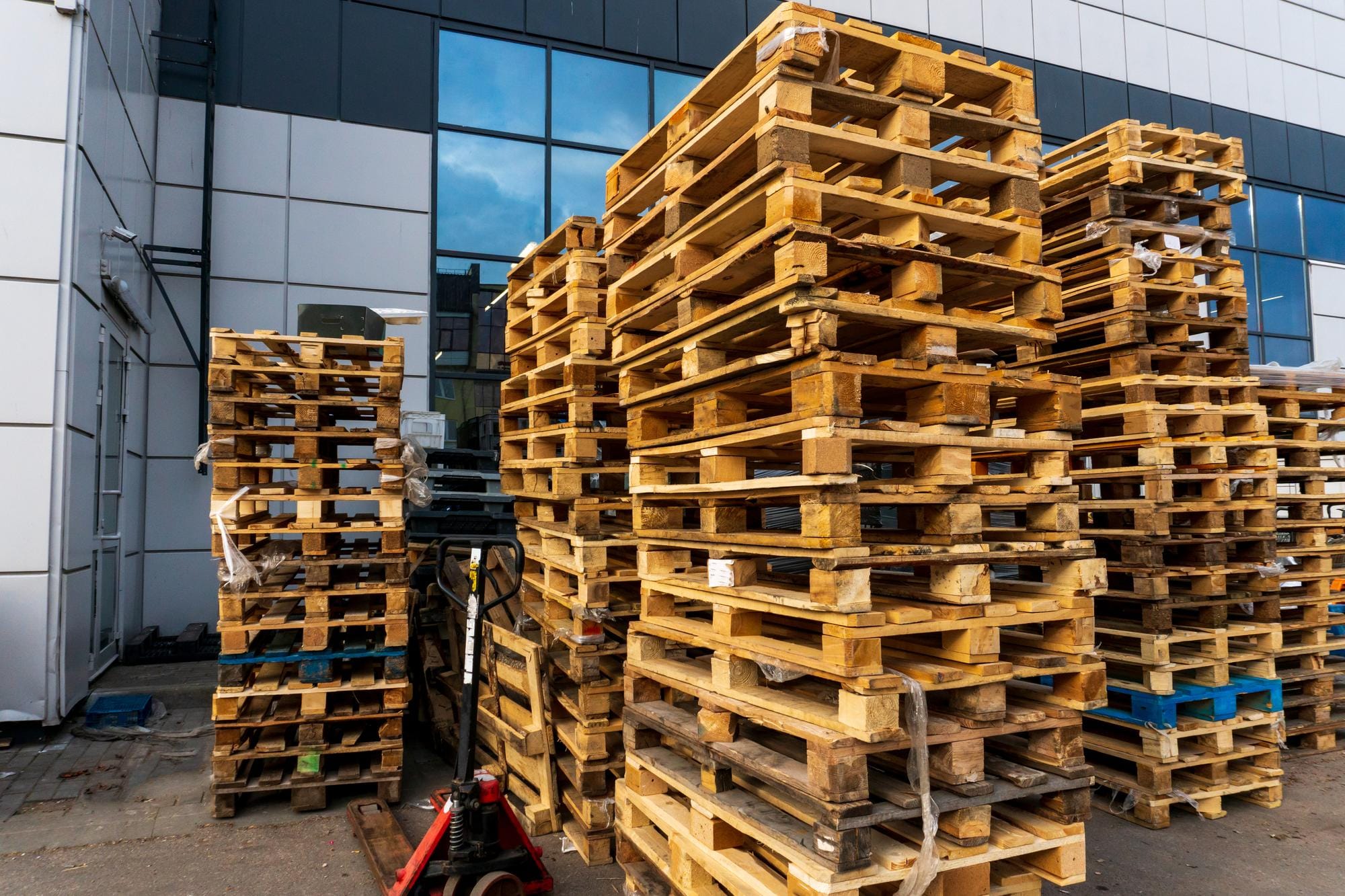
If you work in warehousing or transport, you’ve probably come across both pallets and skids. They may look alike, but the one you choose can shape everything from handling efficiency to storage space and overall costs.
Choose the right one for the job, and your goods move faster and stay protected along the way. We’ve put this guide together for that exact purpose—to help you get it right the first time. We’ll walk you through the key differences between pallets and skids, their practical uses, and decision points to keep in mind. This will make sure you know exactly which option gives your supply chain the upper hand.
What is a pallet?
A pallet is essentially a flat structure that’s designed to support goods while they’re being lifted, moved or stored. What sets a pallet apart is its two-deck design. For instance, it has a solid top deck for holding products, and a bottom deck connected by blocks or stringers.
This structure gives pallets their strength and makes them highly practical for a wide range of tasks.
Here’s why pallets are so widely used:
- Stable and strong: The top and bottom decks work together to distribute weight evenly. This reduces the risk of items tipping or getting damaged during handling.
- Easy to handle: Designed for forklifts and pallet jacks, pallets can be lifted from multiple sides, which makes loading, unloading and stacking much faster and safer.
- Highly versatile: From local warehousing and retail to international shipping, pallets are suitable for almost every type of storage and transport need.
What is a skid?
While pallets are the most common choice in supply chains, skids can offer a simpler, more straightforward alternative. A skid is similar in shape to a pallet, but it only has a top deck. There’s no bottom deck underneath. Instead, it sits on runners (commonly called bearers) that rest directly on the ground.
Sometimes referred to as the ‘original pallets,’ skids have been around for decades and remain popular in industries where simple, durable platforms are all that’s needed.
This straightforward design gives skids a few unique advantages. Let’s take a look at some of them:
- Easier to move across floors: Without a bottom deck in the way, skids can slide more smoothly for short-distance moves within warehouses or production areas.
- Lighter and more cost-effective: Using less material makes skids cheaper to produce and easier to handle manually when needed.
- Ideal for static storage: Skids are often used for storage of smaller items in many factories and warehousing operations.
What is the difference between a pallet and a skid—and why it matters for your business

While pallets and skids may look similar at first glance, the choice between them comes down to how they’re used and what you need from them. Here’s a closer look at the main differences between them:
- Handling and movement: Pallets are built to work effortlessly with forklifts, pallet jacks and conveyor systems, which makes them an excellent choice for moving goods around quickly.
Skids, on the other hand, are easier to slide or reposition by hand for short distances inside your warehouse or production area.
- Stacking and storage: Thanks to their two-deck design, pallets can be stacked safely and used to make the most of vertical storage.
Skids aren’t really meant for high stacks. They work best as single platforms or low stacks where stability is key.
- Cost and material use: Skids use less wood, so they’re often a more budget-friendly option for internal operations or one-off projects.
Pallets tend to cost a bit more. But that extra material gives you durability and repeat-use strength, especially when you’re shipping or storing heavier loads.
- Where they really excel: Pallets are the go-to for shipping, logistics and general warehouse work. This is because their two-deck design makes them incredibly stable, stackable, and easy to lift with forklifts.
In contrast skids are ideal for reducing cost, space, and labour in large operations when transporting small items without using large pallets. Using smaller pallets can reduce occupational health and safety risks associated with lifting compared to larger pallets.
Which one should you choose?
Deciding between pallets and skids really comes down to how you plan to use them. Both have their strengths, but they shine in different situations.
Choose pallets if…
- You need to move goods often and quickly.
- You want to stack safely and make the most of your warehouse space.
- You need durable and reliable materials that can keep up with the demands of your supply chain.
Choose skids if…
- You need to move small items.
- You want the most cost effective materials handling.
- Large scale volume of small product shipments are required.
So, to sum it all up, pallets are your go-to choice for everyday warehouse work and moving goods. And skids are there when you need to save time and money. Matching the right solution to the job keeps your operation running smoothly and helps you avoid unnecessary costs or risks.
Get the right solution for your business
Choosing between pallets and skids doesn’t have to be complicated. At PalletWest, we supply both, as well as custom builds tailored to your exact needs.
Our team can help you decide what works best for storage, transport or export. That way, your goods stay safe, your workflow stays smooth, and your costs stay under control.
Get in touch with our team today to request a quote or explore PalletWest’s full range of products and services.